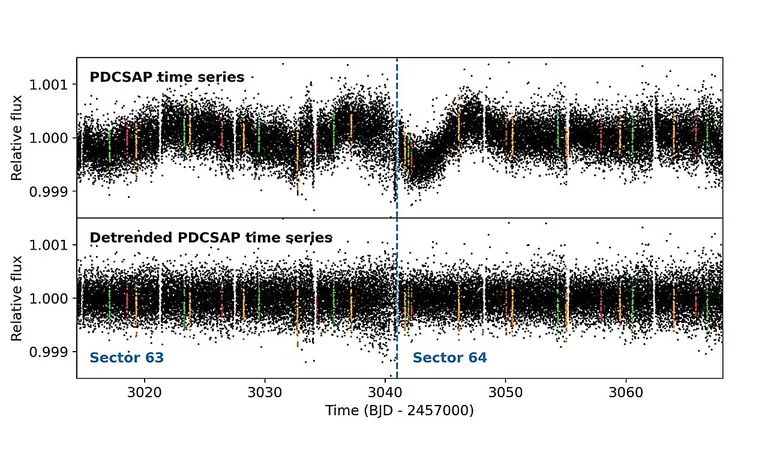
Unveiling the 'Christmas Wreath': James Webb and Chandra Spot a Dazzling Star Cluster in Our Cosmic Neighborhood
2024-12-22
Author: Rajesh
Astronomical Discovery
Astronomers have recently captured an enchanting image of NGC 602, a striking star cluster located approximately 200,000 light-years away in the Small Magellanic Cloud (SMC), an intriguing dwarf galaxy that orbits our Milky Way. This breathtaking sight, reminiscent of a cosmic "Christmas Wreath," was shared with the world on December 17, 2024.
Significance of the Small Magellanic Cloud
The SMC typically resides in the shadow of its larger counterpart, the Large Magellanic Cloud, but it holds profound significance in astronomy. This unique galaxy provides an exceptional platform for studying stellar formation processes in environments that differ radically from our own Milky Way, making it a living laboratory for astrophysicists.
The Heart of NGC 602
At the heart of NGC 602 lies a cluster of hot, young blue stars that formed from a collapsing gas cloud. These stars are still enveloped in remnants of their birth material, which the intense radiation from the stars is slowly eroding. Photons emitted from these hot stars sculpt the gas, resulting in towering pillars that point towards the luminescent blue stars at the core.
Unique Composition
What sets the gas in the SMC apart from that in the Milky Way is its composition. The SMC has a deficient abundance of heavy elements created by successive generations of stellar explosions, making it an ideal candidate for studying star formation akin to that which occurred billions of years ago in the early universe. By examining NGC 602, astronomers hope to obtain crucial insights into the conditions of star formation during the cosmos's formative years.
The Composite Image
This stunning image is a composite, expertly combining data from the Chandra X-ray Observatory and the infrared-sensitive James Webb Space Telescope (JWST). Chandra's X-ray observations, depicted in red, reveal the presence of massive young stars radiating high-energy emissions, while JWST’s contributions in shades of orange, yellow, green, and blue uncover the intricate structures of dust and gas surrounding these stars. Together, these images illustrate the life cycle of stars, from their birth to the dispersal of the material that fuels new generations of stars.
Celebration of the Holiday Season
In celebration of the holiday season, NASA has also released an animated version of the NGC 2264 region, commonly known as the “Christmas Tree Cluster.” This captivating animation merges Chandra's X-ray data with optical imagery captured by astrophotographer Michael Clow, showcasing the breathtaking beauty of our universe.
Closing Thoughts
As we gaze into the abyss of space, images like these remind us of the wonders that await us just beyond our own galaxy. With every discovery, we draw closer to unlocking the mysteries of our cosmos. Stay tuned for more stunning insights from the final frontier!






 Brasil (PT)
Brasil (PT)
 Canada (EN)
Canada (EN)
 Chile (ES)
Chile (ES)
 España (ES)
España (ES)
 France (FR)
France (FR)
 Hong Kong (EN)
Hong Kong (EN)
 Italia (IT)
Italia (IT)
 日本 (JA)
日本 (JA)
 Magyarország (HU)
Magyarország (HU)
 Norge (NO)
Norge (NO)
 Polska (PL)
Polska (PL)
 Schweiz (DE)
Schweiz (DE)
 Singapore (EN)
Singapore (EN)
 Sverige (SV)
Sverige (SV)
 Suomi (FI)
Suomi (FI)
 Türkiye (TR)
Türkiye (TR)